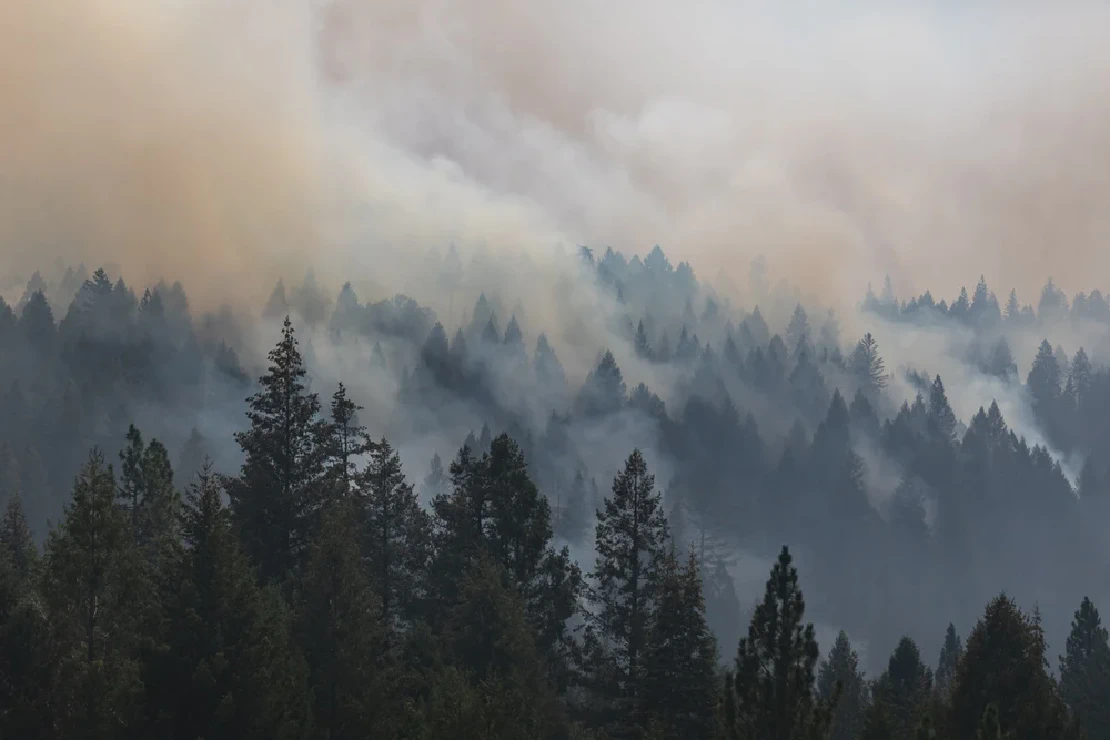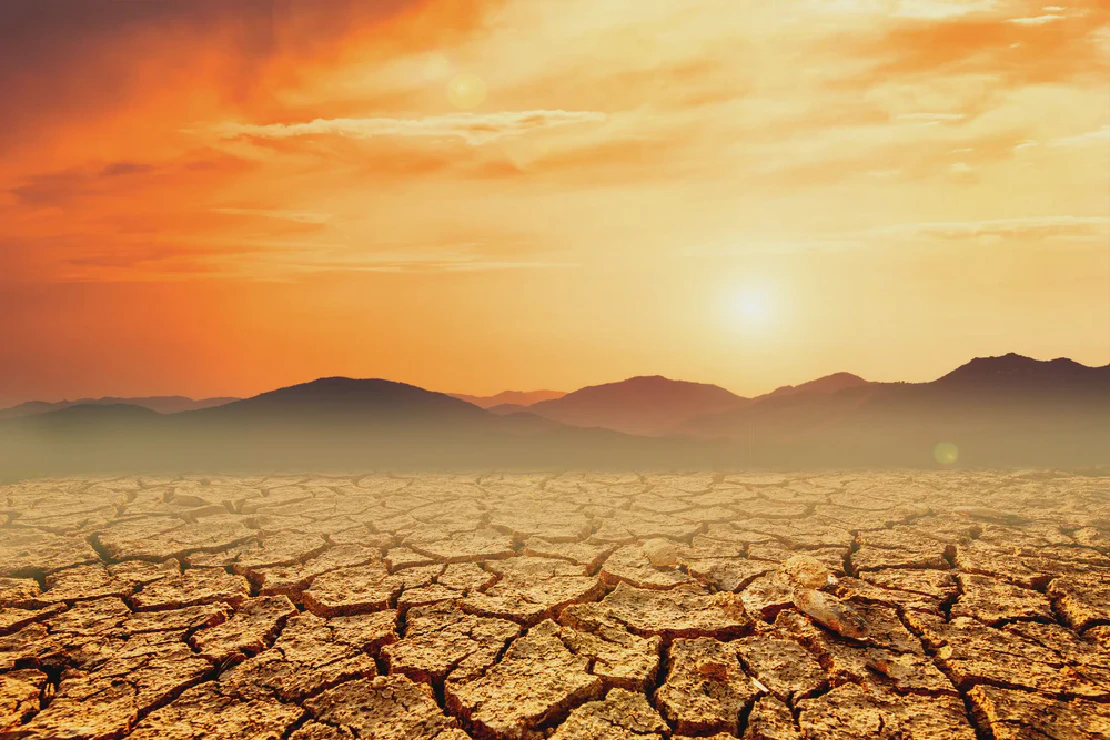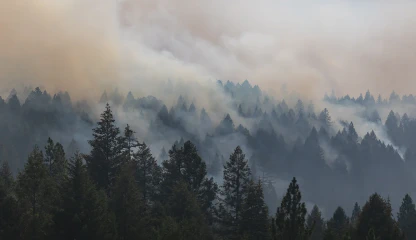Earliest records
One of the earliest recorded wildfires in California was the 1889 Santiago Canyon Fire. However, doubts have been raised regarding the accuracy of many reports detailing the fire’s scale and impact. It was not until 1932 that the official recording of California wildfires commenced with the Matilija Fire, a blaze that engulfed nearly 220,000 acres in the Santa Barbara National Forest of Southern California. For several decades, the Matilija Fire held the title of one of the largest wildfires in California until it was surpassed by the Cedar Fire in 2003.
But even long before that, for thousands of years, Native American tribes who practiced controlled burns and lightning-caused fires regularly burned millions of acres in California.
Wildfire detection technologies of the past
California has a long history of wildfires, and it has always been important to detect wildfires early on. Here are some practices that have been employed in the past:
- Fire lookout towers: While the technology is still present, the number of registered fire lookouts in California is around 200 , with only around 50 of them being staffed during the wildfire season. This is significantly less compared to earlier years when there were approximately 600 manned lookouts during the fire seasons.
- Ground patrols: One of the initial approaches to wildfire detection involved dispatching teams on horseback to patrol the area and inspect for indications of wildfires.
- Air patrols: In the 1920s, the Army Air Service and the Forest Service collaborated to patrol the forest areas in California.
Largest recorded and deadliest wildfires
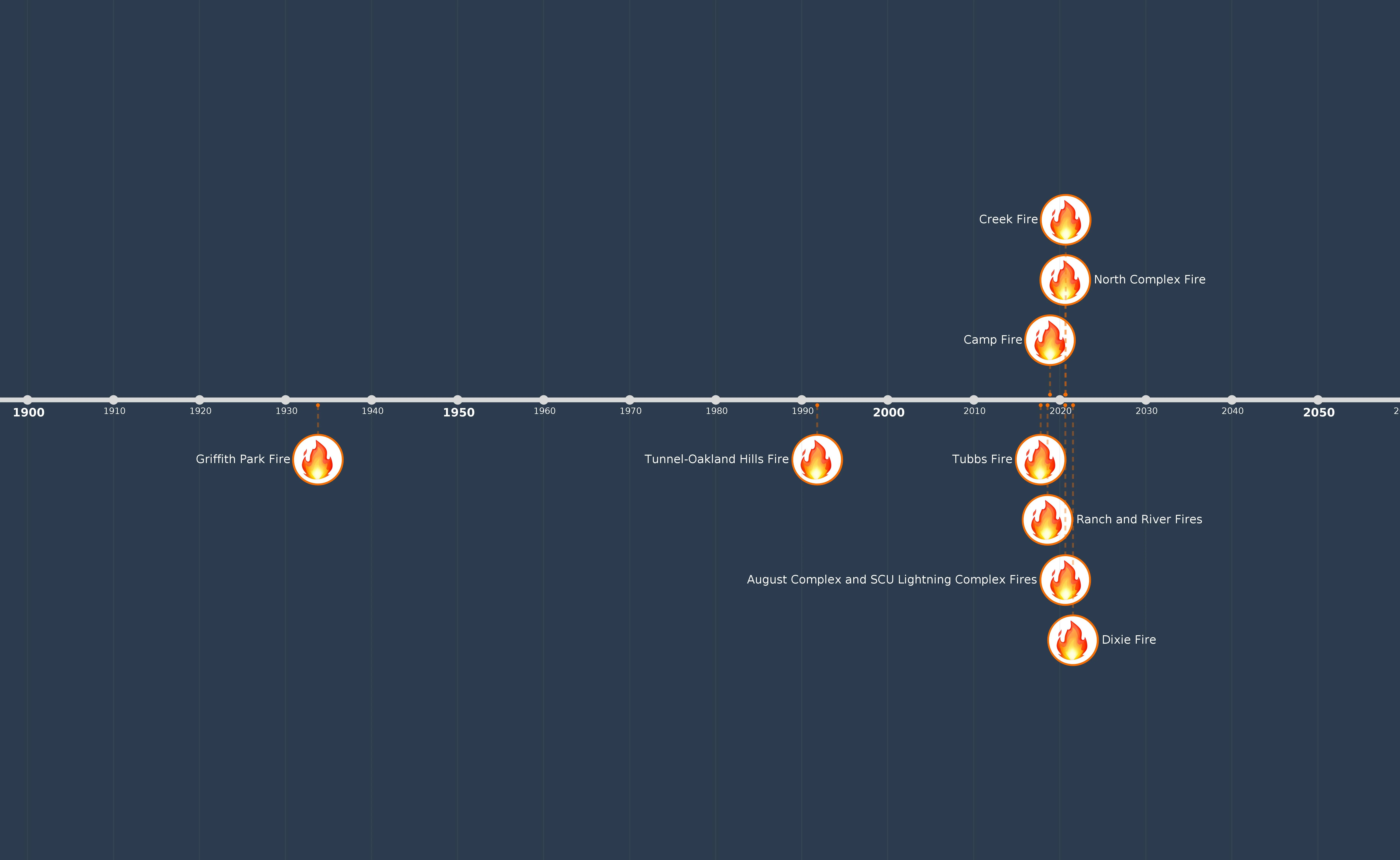
Though the California landscape has always been fire-prone, the majority of the largest and deadliest fires have occurred since 2000:
- August Complex Fire , 2020. A massive wildfire that started on Aug 16, 2020, burned 1,032,648 acres, affected seven counties, and caused one fatality.
- Dixie Fire , 2021. A huge fire in Butte, Plumas, Shasta, Lassen, and Tehama counties. The wildfire burned 963,309 acres of land and caused one fatality.
- Mendocino Complex Fire, 2018. A massive complex of wildfires, consisting of Ranch Fire and River Fire , raged for over three months. During that time, 459,123 acres of land in Colusa, Mendocino, Glenn, and Lake counties were burned. The fire caused one fatality and destroyed around 280 buildings.
- SCU Lightning Complex , 2020. A wildfire complex that lasted from Aug 16 till Oct 1, 2020. It was caused by a series of lightning-caused fires and ultimately consumed a vast area of 396,624 acres in five counties.
- Creek Fire , 2020. One of the largest wildfires of the severe wildfire season of that year. It engulfed an extensive area of 379,895 acres and destroyed 856 buildings in Fresno and Madera counties.
- Camp Fire , 2018. The deadliest and most destructive wildfire in California’s history. It caused 85 fatalities, burned 153,336 acres of land, and destroyed 18,804 buildings.
- Griffith Park Fire , 1933. A wildfire that took place on Oct 3, 1933, in Griffith Park in Los Angeles. It resulted in the tragic loss of 29 lives.
- Tunnel-Oakland Hills Fire , 1991. A fire that occurred in October 1991 in Alameda County claimed the lives of 25 people and injured 150 others.
- Tubbs Fire , 2017. A wildfire that engulfed parts of Napa and Sonoma counties and resulted in 22 fatalities.
- North Complex Fire, 2020. A lightning-caused wildfire that burned 318,935 acres in Plumas and Butte counties. It resulted in the death of 16 people and injured 100 more.
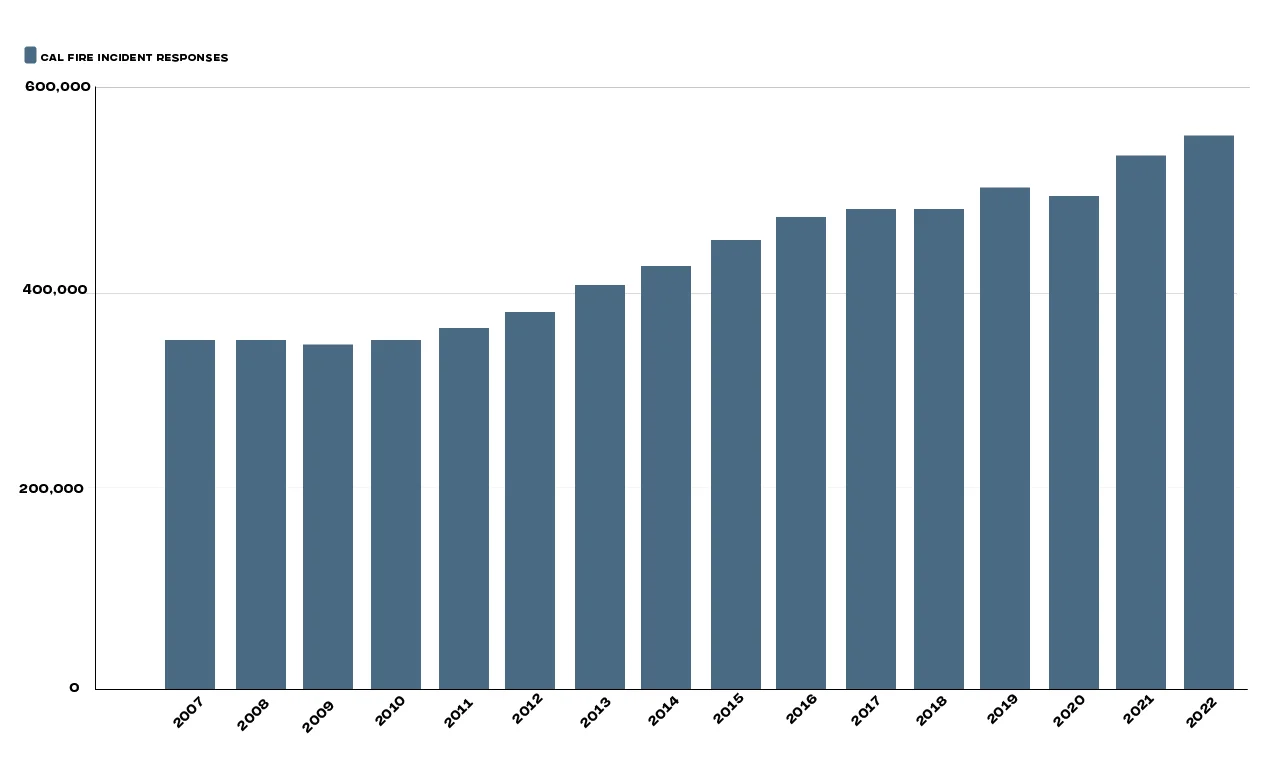
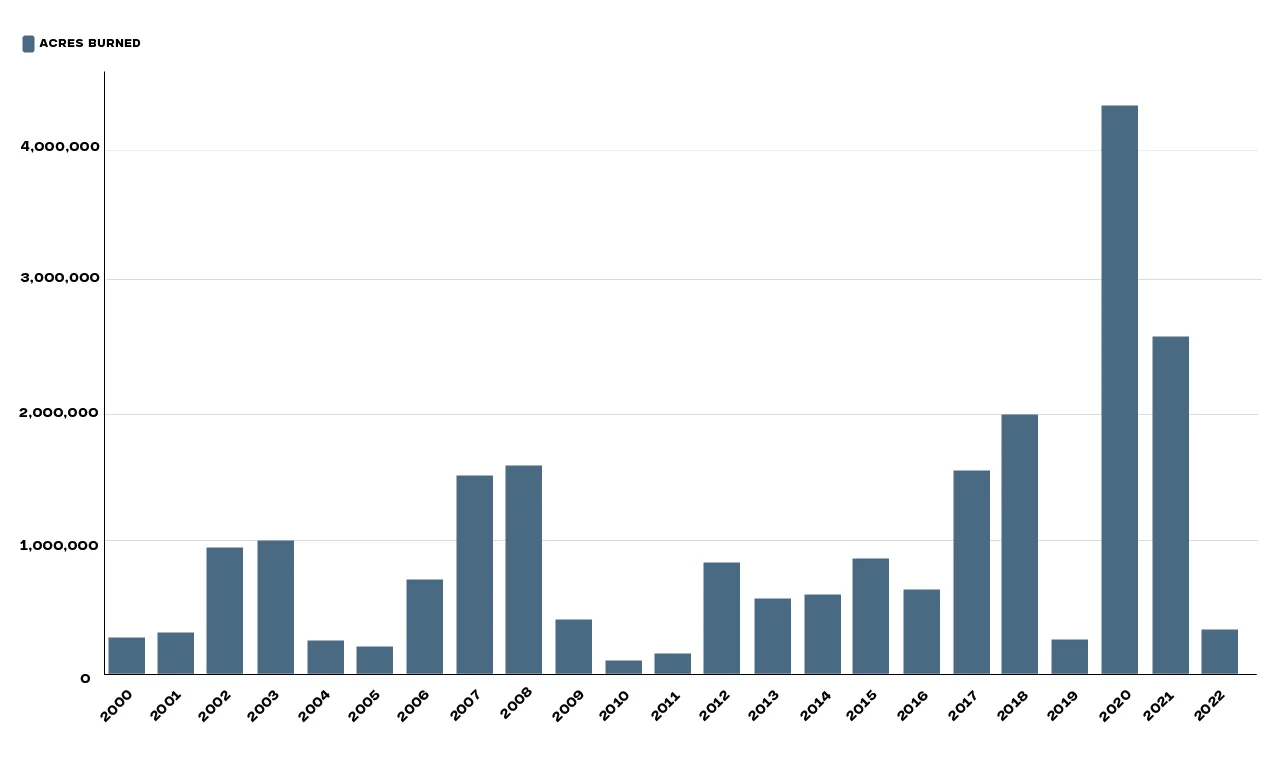
Why are California wildfires so devastating?
Numerous factors contribute to this trend:
- Climate change: The record-breaking temperatures have resulted in a decline in atmospheric humidity and increased evaporation rates. Furthermore, as the climate continues to change, winter precipitation is condensing into a shorter time frame, thereby extending the duration of the fire season.
- Wind: Strong and dry winds, such as the Santa Ana winds in California, play a significant role in fueling wildfires. These winds are a catalyst for rapidly igniting and spreading wildfires by drying out soils, trees, and vegetation.
- Human activity: When the weather is dry and windy, people still have a tendency to light campfires and casually flick cigarettes, posing a significant risk for fire outbreaks.
- Fire suppression: With approximately a century of fire suppression practices in California, there has been an accumulation of unnatural fuel loads, which merely postpones the inevitable and can exacerbate the severity of fires. This build up of fuels can make fires burn more intensely and with greater severity when they do occur.
Modern solutions
Over the years, various new methods for rapidly detecting wildfires have emerged, including the utilization of satellite imagery, sensors, infrared cameras, and drones. Many of these approaches involve the integration of artificial intelligence (AI) to enhance the analysis of the gathered data.
Another innovative approach involves utilizing machine learning and social media data for wildfire detection, enabling the rapid generation of wildfire alerts .

